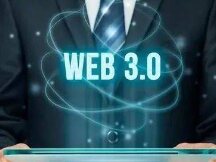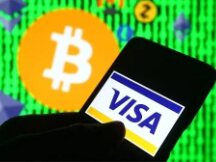Why Web 3 Can Solve the Data Usage Problem
Today I will clarify my understanding of the domain, starting with enterprise data.
At the beginning of 2022, I wrote on Twitter:
Areas of personal focus for 2022: industry/web3 information architecture, social media/web3 streaming, slush-funded channel games, wallets (web3 entry including DID), subculture/culture NFT stations of youth, DeFi management solutions, technology exit from the public chain / Cross-chain
Today I will clarify my understanding of the domain, starting with enterprise data.
details
1. How important is the information?
1. Changes in production and changes in cooperation
2. Reinvent the business model still used on the Internet
3. Website Color Information2
2. What are the data usage issues?
1. Boundaries of privacy and self-defense
2. External data and installation tool rules
3. IoT and print data
4. Compare the cost of data
5. Data Analysis
3. How can Web3 solve these problems?
1. What is Web3?
2. How Blockchain Can Solve Some Problems
3. Web3 Data Market Outlook
1. How important is the information?
Changes in the production and migration of organizational data
Since the development of human life, the energy industry has undergone many changes. Changes in product design have led to changes in the production process, and because manufacturing organizations are designed to accommodate different activities, it affects manufacturing organizations. Pure production requires exchanges to meet demand, which is often inefficient and hassle-free. In response to the need for efficiency, incomes have increased through the exchange of goods. The secondary industry began to develop slowly, and the stock market like the secondary industry began to flourish day by day.
I am designed to replace three different types.
First, with the advent of household goods, he shifted from the old way of life to farming.Using a variety of tools such as stone tools, copper tools, and metal tools, people began to change circumstances as they pleased, began to grow wheat and barley, began raising chickens, etc. This period was fulfilled by food production (agriculture, home trade), and with the growth of prosperity, certain industries gradually emerged (from the Shang dynasty word "merchant" by). As the community grows, product development has become increasingly difficult and self-sufficient product development to meet customer needs, and most of the market has also increased. It has been around for thousands of years, and many institutions that exist in modern life, such as banks and customs, began to develop at this point.
Second, the cottage industry entered the mechanical industry with the development of machine tools.Coal and steel solve the strength problems, and the material properties of the product can be changed accordingly, and the machine tool system works to solve the operation problems. After all, human power is not the energy of the body, and renewable and inefficient production eventually comes up against limits and power. The advent of machines (including after the electric revolution) liberated the human hand and improved production efficiency. In this regard, manufacturing has begun to move in the direction of the division of labor, and through the enslavement of technology, people have the opportunity to develop science, technology, urine and people, and prosperity can advance in many ways and in many ways. cultures. The freedom of manufacturing led to the success of the distribution system, the process of industrialization began to explode, and modern industry began to develop.
Third, the emergence of the Internet as a sign of data production technology.The Internet, as its name suggests, is a network of interconnected computers. The development of success creates a lot of information, for example, in fundraising, people first recorded business relationships through joints and bells, then surgery was performed, they were written. As success scaled and too much work became increasingly difficult, the need for clear and understandable business processes began to grow. It gradually evolved into the two main entries in the account books we know today.
However, the producer did not have time to show the greatest value, and in the long history it was saved and stored in a corner where no one was canonized or not, remember, leave in the pass. Until computers (like microchips in general) turn text and the pen into communication devices, people will be able to write and share information in a variety of ways. In the context of the Internet, the manufacturing and marketing industry is rediscovering the value of information, so it can be assumed that information is responsible not only for the product, but also for manufacturing.
Of course, before the advent of the Internet of Things, information could be used as a means of production, but this means higher costs, and with the advent of the Internet, information text is digitized, offering vital functionality at zero marginal value. (A simple understanding of marginal price indicates that price increases with each additional item.)
Indeed, another advantage of the production of data on production systems is the network externality (network effect). The network effect means that anything added to the network will have a positive impact on existing nodes. This is also important for tools where the marginal value of the data is zero. Each of these new additions shares new data with all nodes at a value of zero (this is the basis of good power consumption).
The absence of marginal cost and the network externality give the data production process some potential risks, such as rapid scaling and natural monopoly. Once you understand these two concepts, you can see why internet companies can be more profitable than manufacturing in just a few years, why starting an internet business has always been about burning money, and that's why Chinese Internet companies have recently been in decline.
Internet-based manufacturing changes have also affected their organizational structure. According to the business owners theory, businesses exist because their market value is lower than the market price. In online business, the lowest data cost is zero. In other words, businesses need to have lower operating costs to adapt, and the first form of management needs to start moving to a horizontal transition. Management systems that have focused on internal integration, such as Objectives and Key Concepts (OKRs), have also begun to change the fundamentals of Good Practices (KPIs).
Reinventing is still the business model of the Internet
With the constant change of the production process, the purpose of human industrialization also began to change, and compared to hardware, data production received more attention due to its general development. In addition to Internet entrepreneurship, it will become increasingly important to use the Internet to replace traditional businesses.
The existing conversion process has two directions, one is to start with the production process and improve product quality. Intelligence". Procedures, product distribution, business management, etc., the other is to modify business models such as market share, information platform, online shopping, interview, etc.
The traditional industrial model is linear. Assuming you want to buy a thermos mug (why a thermos bottle is the first thing I think of), the first thing you should think about is going to a retailer like a retailer/grocery store. If you need a pre-made metal product, most companies don't mention here that they are looking for an additional metal tool that prevents my titanium metal cups. The complete chains from top material to middle manufacturer (and retailer) are the chains.
Manufacturers are also blind. Why do you say that? Manufacturers have their own money, so at the end of that account is cost and the other end is revenue. The results come from a lower order and you usually get an order with better content. Consumer needs cannot be communicated directly to manufacturers. Usually, not all nodes in an enterprise chain can send the data directly and valorize it to non-adjacents and at lower cost.
The modernization of the Internet replaces "chains" with "networks".
All parts of the network can be connected to each other (unless authorized by the administrator). Consumers can search for companies directly, without having to go to retail stores, go to wholesalers or repair their products (the former means that liability always begins to fade and even consumers can become retailers as long as "they want. The latter are part of the chain I mean each node (they all have multiple options, which helps to break the vertical line and increase efficiency), although the role of retailers seems have been deliberately eliminated, but it is not the internet really shows the role of the retailer is acting as a middleman as it costs the consumer directly to the manufacturing company, and the retailer can benefit if they can mix and match the right information.
However, we know that shared systems can bring back a lot of data. If the Internet only changes "channel" to "network", data blocking and interference will ensue, and data integrity and integrity will not be achieved. The second point of restructuring of the Internet business model is the emergence of platforms.
What the platform does is enhance the comparison of data. Once the traditional object chain can be recycled into the internet chain, something has to be done to understand what the chain industry sees: matching and data requirements. Manufacturers go to side B (industry) and consumers go to side C (consumers). Consumer demand for a particular product can be captured by the manufacturer, and the product developer benefits when the same demand occurs across the platform (lower costs). ).
As mentioned earlier, the Internet for Manufacturing has two main components: zero marginal cost and an external network. As more nodes are connected through the platform, they will become more dependent on the platform, which means the platform will have a stronger and more powerful voice in the product/industry . Since the sound means the right to set the price, and no marginal value brings the value at the platform close to zero, the right to the price means the value is closer to one to one, and network connectivity can lead to faster access to the platform. Platform. Has received. You can only imagine how much a successful platform would benefit when both results increased at a risky price.
In this case, I will address three of the previously mentioned issues.
Why can internet companies be more profitable than products in just a few years? Why Do Internet Startups Still Love Burning Money? Why are Chinese Internet companies starting to decline recently?
Issue 1 has been resolved. Question 2. According to the platforms in the state of competition they face, one is the instability of the ground and the other is the different options of new nodes. There is still one player left on the battlefield and there are similar opponents, so the outcome is uncertain. The constant increase in revenue and the consumption of money to compete for users (in the context of a bicycle race) are intended to ensure that users have no future choices and use their words to obtain money . (Diddy's record)
This is the core of the internet platform's business model. "Winner Takes All"
But in fact, the platform can do more than that. If the nature of the platform itself affects normal market growth, such behavior is myopic and unstable. If the burner wins, it will have to "tax" future nodes to generate the burnout. This is when a new, more powerful platform will emerge, which will make it easier to attract cars with better services and lower costs. (Example is right after the bike race)
External network does not mean pure ditch, but "good service = too strong" and "bad service = house will explode". These negative business patterns will not last long.
Back to where the platform might be. (Actually, it's already off topic, but since I said it, I'll finish it)
As discussed earlier, redesigning commercial chains on the Internet is about turning “chains” into “interconnections” and fighting platforms to disrupt nodes. However, they ignore the fact that the external network is the path of the platform nodes and still ignore the differences between the nodes. Using the online car as an example, the driver and the passenger both have different behaviors. The behavior of the taxi driver is different and more expensive for the result "to call the car for him". What platform is the discount on? Behind him. I believe. In the online auto foil war, racers will never forget who can download all the apps and prostitutes. You use multiple apps simultaneously in your work relationship, but you know how each app treats you.
That is, drivers are more likely to be honest and play an important role in taxi behavior (drivers are service providers, drivers don't blame the platform for bad passengers, the drivers of the wrong passengers), and platforms inevitably blame the platform). Therefore, the goal is to use supporting technologies to better suit driver and platform preferences. Whether subsidized or otherwise measured, they must be as fair as possible to drivers. What about passengers? Now remember that of the two options for passengers (taxi, hailing) in terms of network externalities, the latter remains the better option (but with little reward).
Therefore, by balancing lifecycle benefits, they devote more resources to providing long-term support to drivers, increasing their enjoyment. Among passengers, the focus is on providing a more convenient and comfortable ride than taxis. (provided by the driver), financial support is secondary. , a better and more fun way.
Another point is that horizontal competition on platforms is better than vertical expansion. If the external network received by the platform can be used from top to bottom, why not use repair? Otherwise, the external network of existing platforms is at risk if there is external support for users to violate success.


Check schematics for specific mods
All of the above refers to the Internet that exists between computers (humans) and computers (humans). If the Internet of Things is still in the game? The combination of computer (device) and computer (type) and computer (type) and computer (human) will make the network equal to the development of the motor level. Think about how many averages we have and how complex each new addition is.
The redevelopment of traditional business models through the Internet / Internet of Things is not yet complete. The "data generation" of the Internet is the essence of reusing data created by nodes in a network. Information from a point of view concerns the power of modern Internet marketing.
data silos in web2
As mentioned above, Internet companies are developing a platform to complement data collection and integration, and have greatly benefited from using zero marginal cost data generation features and network connections. With the development of the Internet of Things, big data, cloud computing, intelligence and other technologies, people's lives will become "digital".: Using digital to solve payment situations, solve operational problems, solve relationships, solve financial system needs... In this digital transformation, people The "online" period keeps increasing and more more people are entering the archives. The Internet.
Today, sleep monitors can receive sleep information, smart home can receive life information, smart travel devices can become mobile. , monitoring anywhere can get all the physical and behavioral information. And in the future we will add: Internet of Things will support databases of data. Big data and cloud computing will allow algorithms to describe digital images from data and explore the connections between data and people...
The information ecosystem of the web2 is difficult to satisfy with the increase in data and demand activities.
Large Internet companies make money by managing user data, but more importantly, they do not have this information, but provide free services to them. incentives), privacy breaches occur, data is stored on intermediate servers, and the content of each form is not intentionally closed. The important thing is that each school has its own data, so the misuse, retrieval, storage and management of data is not systematic and distorted, Color data is created by organizations, does not interfere not with measurement and illegal data occur frequently. , the cost of trust is very high.
With the advent of web3 and the Internet of Things, information is growing exponentially, but if the above issues remain unresolved, how many different industries will develop? The cost of applying new equipment will be reduced.
Data silos don't work. Humans are animals, materials too. Data must be open and interconnected to take advantage of both characteristics of data design. With the advent of various new technologies, the potential application of data has emerged. The second part of this article details the current issues of data use.
2. What are the data usage issues?
Today's market is based on market mechanisms, and based on various commodity exchanges, the industry is generally divided into commodity markets, service industries, aging technology industry, financial industry, industrial business and information.
Among them, the technology industry can be divided into technology equipment and technology services, and can be blocked, and services can also be packaged as enterprise products, so in my opinion, in general, the product market, the market, the financial market. , business information. (The reason for choosing employees is because of the background, and the behavior of people is difficult and unthinkable, so it cannot be easily defined as a product market.)
The first three are things we'll come across many times, but the concept of data marketing is one solution. As the name suggests, in business information, information such as business information, financial information, and exchange information. Most of the information exchanged in the information industry, such as real estate agents, headhunters, CNKI and the consumer information industry, have specialized intermediaries. Users have to pay for this information, otherwise they will have to pay dearly to find it.
As mentioned above, currently data exchange can only be a small part of the data generated on the Internet and important in the gray area. Just as the driving force of today's industries, for data to drive the digital economy, business models, industry compliance and regulatory requirements are needed. And it's difficult.
Confidentiality and confidentiality
The first issue to mention is privacy. I have already said that many files will be closed.
Sleep monitoring can receive sleep information, smart home can receive life information, smart travel devices can obtain mobility, everywhere monitoring can obtain all physical and behavioral information...
This information is important to companies that provide these services. For example, if a smart air conditioner detects that it wants to turn on the air conditioner for the winter, it can purchase this information from the manufacturer of "Barabala Ion Heater", and then post an ad for its "Healthy" product. "Energy-more than air conditioning"… The cost of buying 1000 pieces of this equipment, targeted by the manufacturer, may be cheaper than posting on a specialized network on the homepage. .
I have a question here. What if you don't want to let them know you like air conditioning?
The most common way is, of course, to remove the air conditioner and replace it with an air conditioner, but what if the air conditioner chip can store the data? Entering the savings market for old fans will be more reliable. The smart refrigerator is the same, so it's better to replace it with ice in the basement, and you can't take the train quickly, and you can't skip the wire meeting. The city is uninhabited... However, with a lack of work, the quality of life deteriorates, and the technology clearly declines, but you learn that it degenerates into a primitive man.
- The exclusion of new material and the exclusion of data collection are incorrect. The point is that people should have the right to judge for themselves, and they can choose for themselves what information they write and what information they don't write. But is it true?
Friends who have studied the industry know that the concept of "destroying justice" stems from the asymmetry of data that underlies it. This means that when users select the type of information they want to write, they can choose not to share the information because no one wants to know the real information about their life, nor provide the false information for the value of the data.
When that happens, the data will be invaluable and the digital business will disappear. Because no one wants to know your name is "Cambnettle Swizzy Bucknee Bwisda" after all the hard work. I won't give your real name. Guess me, I got the money first. Oil it up. Lala Zhang.
Therefore, the collection of data must be objective and tacit, which requires a sufficient level of confidentiality according to the user's point of view. Here, encryption tools now have a lot of information.
But the real question is above all philosophical. How to define the limits of privacy? Should there be privacy boundaries chosen by individuals or groups? How to reconcile rules and personal rights? What to do with the outside world of privacy?
For example, when data is collected by default, it is up to the user whether or not to encrypt the data. In such a sensitive situation, the government can choose to help “encrypt” whatever data it chooses. You do it yourself, and you also do some of the information that often affects your business. Options and benefits for the user seem to be the best solution.
But what if the person is a real terrorist and the information they choose not to publish contains information that can find them? Some say the government can! The problem is that the government does not know who the criminals are until they have worked. The evil of the wicked will harm others. How to deal with strangers?
Confidentiality is like information, and different people will have different understandings of it. I don't think the neck expression is great and some people can be very dirty. This leads to the fact that some people's "privacy" is always violated when the design is widely used. This general procedure should be as broad as possible, but broader than the “norm”.
2. External data and installation tool rules
To discuss external data, we must first emphasize two points: no arguments and no exceptions. Both of these strategies are used to identify public goods, and outside there are issues in the public domain.
Non-argument means that when one person uses the product, no one else reduces or restricts the consumption of that product.This usually means zero/lower marginal value (so internet devices are usually not competitive). Most of the files we have seen are reusable and do not clone or modify their contents because they have been used only once. The difference is that the college entrance exam is "competitive" because if I get the score, someone will be expelled.
Non-exclusivity means that when a person eats a product, it cannot be excluded (or the exclusion rate is high) that others may have consumed it.What does it mean? For example, if you want to go fishing in the pond, you must let other people fish (except your pond water). You can't hit him unless you give him a lot of money to take him out, but if he goes and others run in the road, you can't hit him. name method.
He is a good citizen who does not like competition and who excludes. Public utility issues are a well-known activity."People's poverty" means that everyone wants to use public resources as much as possible for their own benefit, which ultimately leads to the destruction of the capital layer. Indeed, all users of capital resources create "negative for others" for others.We know strangers are great on the internet. This happens because the marginal value of producing data is zero and public capital is clearly no better.
Whether third parties are good or bad, the presence of externals means that property rights are not precise enough. The market cannot establish a reasonable price for a product whose equipment rights are not clear. What to do with external data?
First, we need to divide our data into areas of conflict and non-specificity. In uncontested and undisclosed documents, this must be provided by federal/state law, and the proceeds go to that rule. such as meteorological data, macroeconomic data. A characteristic of this type of public file is that it does not interact with an individual. It's the most obvious.
In the case of contest/creation data, it is not possible to separate public and private content in the data, as the writing does not specify who is authorized. For example, if a company wanted to find an investment in city X through the life data of identical people in city X, a total of 100,000 people in city X would be willing to provide this information, but the company does not only needs 10,000. This type of data contains external data because some of the content is shared, and use of this data may affect other data as "negative externalities" and reduce its value.
As another example, since I use this software to listen to music, in addition to knowing the data of the songs I'm listening to, I also need to know the software that saves the data. Except for my behavior, the rest is basically created by software. Does that mean the software also has some of the right tools in my Duolingo file?
Everything human beings do ultimately has to do with the outside world, whether the interactions are physical or caused by life. This way, your data will show the objects you are always associated with, be it objects or people. How can you create clear rules for your data when external resources seem like an exception?
IoT and print data
The first two concepts are somewhat related to information gathering. For example, should data be collected if optional but voluntary? How to maintain the retention of personal data? How can I ensure that my personal information is not compromised by voluntary data collection? Scope, method and scale of data collection?
The collection of existing data can be triggered by an "internet search". For example,Obtaining buying behavior and behavior through payment and usage history This can represent the Internet of Things.
The Internet of Things will enrich people's lives with machines equipped with high-speed systems, and the daily operation of these systems will store large amounts of data and mix it with counted and comprehensive information. This rich content makes it a personal portrait of the larger material, from simple behaviors to curiosity, spiritual kindness, and more. On the other hand, it's very important for digital business and health management, and on the other hand, not only is there an ongoing concern about care, but leaks of this vital information can announce the "death" of the population inside. the digital age.
Therefore, in the process of collecting information, must complete the Internet of Things, which must follow the rules, product reliability, tool identification, accounting system tools, etc. Agree in advance and follow strictly.
Compare data costs
The problem with enterprise data is the relative cost of data.
What do you mean? Compared to commercial products, we ensure that all products are feasible, and based on this, we provide estimates with our own requirements. For example, I am a farmer, and I can cut ten pieces of wood per day, and I can sell one piece for 20 RMB. I want to go to the store to buy an axe. One candle, I was too tired to earn 3,000 candles, so the estimated cost was less than 3,000.
But business data is different. There are discrepancies in the discussion of data cost:In other words, if you don't know what the data is, you don't know its value, but once you know what the data is, the data has no value to me. These characteristics make it very difficult for enterprise data to save money.
Fortunately, large files allow data whose content is not visible to supplement search results. Data users can search or extract the information they need, and the challenge they currently face is how to determine the “authenticity” of data content.
In other words, if low-cost data makes data more valuable, how can data users not display content quickly to meet their needs?
in cryptographyThe process of "convincing a validator that an assertion is correct without providing the validator with key information" is called "blind validation".. But how do you ensure that zero certifiers aren't encouraged by stakeholders to provide valid credentials? It's a good idea to have a support process in place first, but how can you adjust the support if you don't know the facts of your case?
Although the "truth" of the comparison of data points and case studies has been discussed, the need to be clear in the face of enormous needs is the system with versatility, high performance and completeness of the enterprise. Fortunately, the blockchain is already at the solution stage.
inspection data
There is another easy point to see. This is the test case. Since the change was made, general acknowledgment was required. Otherwise, the market will be confused. The current data analysis method is as follows:
A cost-based approach that uses data collection, storage, and analysis costs based on data metrics. The obvious problem is that most files are not specially designed, but in addition to other functions, most files are simultaneously written, stored, etc., and information tools are often still difficult to interpret. . This makes cost allocation difficult.
Revenues, estimates and less cash flow on future data. However, the electronic design of the material is difficult to model. Taking the price comparison is just one example, if the competition is not there, the data may be worthless. Will any part of this result be reduced to the required value? It is also difficult to create different models because the values of the same data for different users are completely different.
Market value is based on a similar measure of market value from similar market data. This requires a complete transaction with multiple exchanges and data retention. Personally, I think business law makes the best sense, but there are still a lot of problems. For example, the market data is unstable due to the price comparison problem, which affected the market, such as the opening of the waste blind spot, which affected the measurement. - Content Reasons).Review). As another example, the data is not a pattern and meaning similar data would be a major issue. ...
3. How can Web3 solve these problems?
1. What is Web3?
Lots of images to talk about web3.


I found some on the internet.
These sections point to several important aspects of Website 3 (including my own findings) such as information rights, community engagement and sharing, open source content, transparent data, creation of a personal value and the level of value.
Legal information:Individuals own their own data and can use it to create and capture value. As a web2 user, huge data monopoly.
Community building and sharing:In the context of web-based blockchain3, consensus has become the basis for value discovery. Community / DAO develops, integrates and co-creates common values. Compatible with current markets (but not vice versa)
Open source:The place of agreement is open space, and the place of integration and sharing is open space. Open source is based on algorithms for the reliability of the future.
Transparency Information:The information is saved in an approved, traceable and immutable format.
Self-development value:Overall, humans can achieve a division of labor with others by engaging in processes developed by algorithms. Many management issues began to become clear and concise.
Cost Tier:web3 is designed with the lowest level of cost, such as currency, to enable information access and exchange, community integration and sharing, and self-value, support and leadership. created.
The technological basis of web3 is the blockchain. The blockchain has the features of decentralized accounting, trade traceability, non-tampering, openness and transparency, smart contract programmability, and built-in "algorithmic incentive mechanism" player. I also wrote an article earlier to learn more: please tell me what you think of the blockchain industry.
2. Blockchain solutions to existing problems
So what advantages does blockchain have for the data industry solutions mentioned above?
I will address the above mentioned question and write the content below and give my own answer.
Q: Internet giants make money by monopolizing user data, but don't own it. They only receive information through the provision of free services.
A: All transactions made by blockchain users are handled by multiple miners, and trading information is public, transparent, and questionable. Now any task that requires this data completes the initial cool down by splitting the tokens. Technological advances such as privacy protection and zero-knowledge authentication allow users to have their own information and policies about future ownership and how to use that information.
Q: They also don't have the best procedures to protect this information (and obviously no encouragement to do so), and privacy breaches have become the norm.
A: The public channel consensus determines that security is unaffected by one or more entities. Since the design of the blockchain incorporates consensus and high support processes, no special retries are required except for mining donations. . (Considering the environmental impact and waste of resources, ETH is now shifting from POW to POS. However, POS is not the best strategy and the best approach. the good is still in a constant state of change .) A consensus on violence is also in the consensus. algorithm. Take the penalty accordingly. A security breach in the negative feedback agreement follows the rules of the process, and the more nodes involved, the less of such a thing.
Q: The data is stored on the main server and we do not intentionally save the content of each file.
A: Blockchain collects data from distributed data stored by unscrupulous employees. It seems impossible to save access information now, but it is not necessary because access information is still publicly available and transparent. sharing algorithm. All entries must be paid for and history edited.
Q: Other schools upload their own data by illegal means.
A: Sharing data easily eliminates the need for blockchain users to back up, they just use a modular front end or access on their own, and they can share those benefits with others. Sharing is fluid, open and transparent.
Q: Data storage and management is not systematic and has many implications.
A: Each record in the chain is sorted by a group of miners as agreed, the list is split, so there is no loss issue, and if there is a big difference, it is returned after a vote community. History can still be written.
Q: There are organizational data silos and there is no interference measurement.
A: Information sharing. Modular products can have a greater impact.
Q: Informal data is common and the cost of trust is very high.
A: Not all public information is required for illegal trade. The trading of private data is carried out by algorithms, so they are completely free and closed without any distinct trust.
Q: What do you mean by privacy limits? Should there be privacy boundaries chosen by individuals or groups?
A: There is a "reasonable expectation of privacy" idea for the existence of privacy boundaries. To address the issue of border privacy, in 1967 Cates v. He asserted in the case of the United States. After being listened to by government police, Cates took him to court. The United States Supreme Court has ruled that "protecting people, not places" means that an individual's behavior is not designed to be expressed and can be protected even if it occurs in public as long as he deliberately avoids being listened to. However, there are deadly problems with this idea. In other words, no one knows whether "own will" is good or bad. As in the previous examples, the bad guys don't want to divulge and they deliberately don't want to listen. Do we need to protect ourselves?
My personal opinion is that privacy should be protected if there are no third parties. When a person's private life is affected by the outside (negatively external) world, responsibility must be taken. Wastewater emissions policies are listed.
However, as mentioned above, it is not clear from whom the external adversity can come, and it can only be studied by each person's self-examination, and these actions rather make the other negative. Is there a process to solve the above problem by zero proof of each question by question?
In the latter case, the border line must be chosen by the group, the target border must be determined according to the principle of externality, and the combination of the other two are considered border restrictions. Individuals may, at their own discretion, keep their personal information free, restricted, or use their personal information for profit.
Q: How do you balance custom with personal politics?
A: Please forgive me for not knowing.
Q: What about the outside world of privacy?
A: Blockchain technology is used by an "algorithmic incentive mechanism". When an exchange occurs between chains, several parts can be separated. At the same time, several operations in a business group can be as follows: Other properties such as public/private If you can specify the members of different nodes in turn in a specific way, you can divide the assets and resolve the data problem. (Bullshit above) Privacy is also part of the deal, but there are also issues with the outside of privacy: how to prevent harm in the first place.
Q: The outside of the file appears to contain no exceptions.
A: Above.
Q: Data collection is optional, but should it be regulated? How to maintain the retention of personal data? How can I ensure that my personal information is not compromised by voluntary data collection?
A: We believe data collection should be voluntary with the support of a secure and comprehensive privacy algorithm. The reason I mentioned earlier is that when people were in control, business information was tainted with a lot of inaccurate information and was no longer needed. In order to maintain the confidentiality of personal information, adequate disciplinary procedures must be in place. Chicken chops). However, where technology does not ensure the confidentiality and security of data collection, we believe that the right of individuals to participate in data collection must be guaranteed. , people cannot use well-preserved information.)
Q: How do you determine the "truth" of the concurrency between the data points and the program? In other words, if low-cost data makes data more valuable, how can data users not display content quickly to meet their needs?
A: As with external privacy, we support our expectation of having the latest technology. You have always believed in "algorithmic incentives". If you don't believe it, switch to the traditional belief of "algorithmic incentives".
Q: How can zero-knowledge providers ensure that their efforts to provide recommendations are not compromised by stakeholders? It's a good idea to have a support process in place first, but how can you adjust the support if you don't know the facts of your case?
A: As with external privacy, the ultimate expectation for this is that user accountability can be done through intelligence. The existing solution is that if users become malicious, they are permanently kicked out of the group node, but the anonymity of the blockchain makes it impossible to determine the good or bad of the place. What allows consumers to be fraudulent in the face of the deception of the stakes is the denial of sanction. In some ways, zero-knowledge validators would be better off being operated by a trusted source (e.g., support) in the real world.
Q: What do you mean by "similar data" for non-standard data in the data measurement industry?
A: "Similar data" does not necessarily mean yes. It can start in the manufacturing process. In other words, at the time the data was created, the data exchange effects were similar depending on the differences in the distribution of the data. , and the data by which its statistics meet the requirements of each classification can be recorded. Business Regression Statistical Means can be applied to the following data that combines all categories assigned to the "similar data" category. It uses the value of each "similar data" to find the appropriate value. In any case, there are many problems with data analysis, and the purpose of the evaluation method is not as clear as possible, but to maintain activity reductions, to order as much as possible and to help the company to obtain competitive prices.
3. Web3 Data Market Outlook
So far, this is the content of this sentence.
First, in the process of transforming human productivity and data integration, I introduced two characteristics of data creation: zero marginal value and network externality. With these characteristics, the Internet has gradually completed the construction of traditional industries and business models, which has also led to people's slow transition to digitalization. In these models, the importance of data has started to emerge, but there are various problems with the use of data in the web2. There are many challenges associated with the data processing industry, such as privacy and border protection, external data, data collection issues, data text comparison rates, and measurement data. Web3, based on blockchain technology, is a new development for the existing Internet and hopes that it can solve many problems through a combination of "algorithmic incentive mechanisms" and provide business data feasibility.
So what do you think of the business case?
First, about the trade information infrastructure. Existing technologies such as privacy protection, external data and zero credentials must be broken. New PR channels with high social and economic status may also be required to be strictly enforced (which is still difficult as it requires sufficient security). From my personal point of view, it is not true to create a public channel based on a variety of industry data involved in surveillance, decision-making of different policies, self-rules, etc. The global market data seems to be progressing with the latest technologies. Then (most of the technological innovation is in the public chains, uh), stable chains of alliances between Christian countries have been created for the existing policies, and the model of protocols is negotiated and recognized.
However, the local news industry will certainly drive the public channel. What information is this? Public data such as usage history of all dapps and user-generated content of the public channel does not have exchange value between users, but B-side values. In the future, it is hoped that the collection of personal data through privacy algorithms will be implemented in the main business, and the first new business will be used to support services such as loan repayment.
Once privacy algorithms mature, organizations or whales will hide some of their activities. Because in normal finance, information is valuable. On-chain token trading will become more difficult and the average user will be more at risk due to the lack of regulation. As algorithms can impact the market, business data such as knowledge payment will emerge, which is more familiar to developers.
In a broad sense, the information industry also includes cultural and spiritual health. For example, membership in video websites and new online platforms is a non-competitive and exclusive product. Means (eg open sea opensea password after NFT purchase). There is always a favorite direction of men in the field of spiritual health, which corresponds well to its own and anonymous character.
Despite all of this, the future of business information still has a long way to go. The estimate is for 2022. When that day really comes, it will be 2032. Maybe... or... not?

Scan QR code with WeChat































